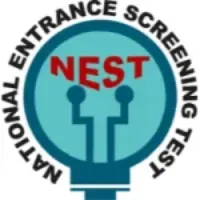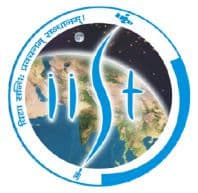Latest Applications Open 2024:
NEST 2025 NISER Syllabus has been Released now. The (National Entrance Screening Test) or NEST is a compulsory test for admission to the 5-year Integrated M.Sc program in basic sciences – Biology, Chemistry, Mathematics, and Physics – at the National Institute of Science Education and Research (NISER), Bhubaneswar and the University of Mumbai – Department of Atomic Energy Center for Excellence in Basic Sciences (UM-DAE CBS), Mumbai.
Both NISER and CBS are autonomous institutions established by the Department of Atomic Energy (DAE), Government of India, in 2007. All the candidates admitted to the 5-year Integrated M.Sc Program at NISER, and CBS are eligible for INSPIRE, Govt. of India, the scholarship of ₹5,000/- per month and ₹20,000/- per year for carrying out summer projects.
The details of the Integrated M.Sc program, courses, research activities, facilities, and faculty profile at NISER and CBS can be found on their respective websites (www.niser.ac.in and www.cbs.ac.in).
NEST 2025 Exam Syllabus – Released
NEST 2025 NISER Syllabus has been Released now. Click to Download Syllabus.
NEST 2025 Exam Syllabus
Questions in NEST 2025 will be mainly based on the NCERT/CBSE science syllabus of classes XI and XII. However, NISER and UM-DAE CBS of Mumbai University have provided a detailed NEST 2025 syllabus.
Candidates are recommended to go through each topic of the NEST Syllabus thoroughly in order to perform well in the M.Sc entrance exam.
The NEST 2025 Syllabus for various subjects is given below
- There is no specific syllabus for the general section
- The aim is to test the candidate’s aptitude for a career in science.
- Questions have been designed to test the candidate’s familiarity with a major historical milestone in Mathematics, Physics, chemistry, biology, astronomy, computer science, and the environment.
- There will be some questions designed to test the grasp of mathematics up to class 10 and the application capabilities of the same to simple problems.
- Some questions in this section are designed to test the candidate’s general ability to compare qualitative aspects of a given scientific topic, and questions based on the concepts elaborated in the passage will be asked.
- Some questions are set to test whether the candidates can interpret the graphical representation of information.
Biology
| Cell Biology | Ecology |
| Genetics and Evolution | Humans and Environment |
| Biotechnology | Biology of Animal Systems |
| Biology of plant systems |
Chemistry
Hydrogen
| Measurements in Chemistry | Mole concept |
| Gaseous and liquid states | Atomic structure and chemical bonding |
| Thermodynamics states | Chemical equilibrium |
| Electrochemistry | Chemical kinetics |
| Solid-state | Solutions |
| Surface chemistry | Classification of elements and periodicity in properties |
| Hydrogensments | |
| p-Block elements | d-Block elements |
| f-Block element | Coordination compounds |
| Metals and metallurgy | The basic concept of organic chemistry |
| Reactive intermediates | Isomerism |
| Nomenclature | Alkanes |
| Alkenes and Alkynes | Aromatic compounds |
| Haloalkanes (Alkyl halides) | Haloarenes |
| Alcohols | Phenols |
| Ethers | Aldehydes and ketones |
| Carboxylic acids | Amines |
| Carbohydrate | Amino acids and proteins |
| Polymers |
Mathematics
| Algebra | Trigonometry |
| Analytical geometry | Differential calculus |
| Integral calculus | Vectors |
Physics
| General | Mechanics |
| Sound and mechanical waves | Thermal physics |
| Electricity and magnetism | Modern physics |
| Optics |
Some questions in this section aim to test the candidate’s general ability to comprehend the qualitative and quantitative aspects of a given scientific passage.
Biology
Cell Biology
Cell theory and cells as the unit of life. Basic concepts of bio-molecules – Proteins, Carbohydrates, Lipids, Nucleic acids. Tools and techniques of cell studies – use of microscope and calibration (microscopy), elements of the microscope.
Bio-membranes – transport mechanism, cellular respiration. Cell organelles – structure and functions. Discovery and structure of DNA, processes of replication, transcription, genetic code, and translation. Principles of the basic techniques in molecular biology.
Enzymes– catalysis, kinetics, activation energy, competitive and non–non-competitive inhibition.
Genetics & Evolution
Fundamentals of genetics and evolution. Pieces of evidence and theories of organic evolution. The organization of the heredity material in chromosomes. Equational division. Reduction division. Mitosis and meiosis compared and contrasted. A significance of meiosis.
Mendel’s laws of inheritance. Discovery of linkage, sex-linked inheritance. Crossing–over, the stage at which crossing–over occurs.
Neurospora genetics. Mutation – discovery, types of Mutation, and Mutations in diploids. Role of mutations in evolution. Elaboration of Mendel’s laws of inheritance. Monohybrid or Dihybrid crosses. Human
genetics – human chromosomes, sex–determination, sex-linked inheritance.
Ecology
Physical and biological factors influencing organisms. Food chains, pyramids of numbers, and biomass. Biological equilibrium.
Interspecific associations. Biodiversity. Flora and fauna. Basics of microbial systems, Ecosystems.
Humans and Environment
Soil, rainfall, and temperature with reference to natural resources. Our natural resources – their uses and abuses. Environmental pollution and preventive measures. Biodiversity and conservation.
Biotechnology
Principles of recombinant DNA technology. Applications of biotechnology.
Biology of Animal systems
Digestive System – Modes of nutrition. Different vitamin compounds and their deficiencies. The structure of the alimentary canal and associated glands, digestive enzymes, and gastrointestinal hormones. Absorption of products of digestion, peristalsis, and balanced diet.
Respiratory System – Gaseous exchange in animals. The structure of respiratory organs, mechanism of breathing, gaseous transport, tissue respiration.
Circulatory System – Open and closed systems. Functions of blood and 1ymph. The microscopic structure of blood and blood vessels. Structures and working of the heart. Distribution of arteries and veins. Circulation of blood coagulation. Blood groups.
Chemistry
Measurements in chemistry: SI units for fundamental quantities, significant figures in calculations. Mole concept: Avogadro number and mole concept, molar masses, mole fraction, molarity, molality, per cent composition, stoichiometry. Equivalent weight and normality. Calculations based on mole Calculations based on the mole concept and stoichiometry of different reactions. Oxidation-reduction reactions.
Gaseous and liquid states: Absolute scale of temperature. Gas laws, ideal gas equation, real gases and deviation from ideality, liquefaction of gases, van der Waals equation. Kinetic theory of gases;
Kinetic theory of gases: average, root mean square, and most probable velocities and their relation with temperature. Law of partial pressures. Vapour pressure. Diffusion of gases. Atomic structure and chemical bonding: Bohr model, the spectrum of the hydrogen atom, quantum numbers. Wave-particle duality, de Broglie hypothesis. Uncertainty principle. Orbitals and quantum
Wave-particle duality, de Broglie hypothesis. Uncertainty principle. Orbitals and quantum numbers; shapes and energy of s, p, and d orbitals. Electronic configurations of elements (up to atomic number 36), filling of orbitals – Aufbau principle. Pauli’s exclusion principle and Hund’s rule.
Hybridization involving s, p, and d orbitals. Atomic orbital overlap and chemical bonds; ionic, covalent, and coordinate bonds; bond parameters. Orbital energy diagrams for homonuclear diatomic
species. Lewis structures. Hydrogen bond. Polarity in molecules, dipole moment (qualitative aspects).
Polarity in molecules, dipole moment (qualitative aspects). VSEPR theory and shapes of molecules. Valence Bond Theory. Molecular orbital theory of homonuclear diatomic molecules (qualitative idea).
Thermodynamics: Thermodynamic states. The first law of thermodynamics. Internal energy, work, and heat, pressure-volume work. Enthalpy and enthalpy change, Hess’s law, the heat of – reaction, fusion, and vaporization.
The second law of thermodynamics is entropy, free energy, the criterion of spontaneity. Chemical equilibrium: Laws of chemical Equilibrium, the law of mass action. Equilibrium constant – factors affecting equilibrium constant and its applications.
Le Chatelier’s principle – the effect of concentration, temperature, and pressure. The significance of ΔG and ΔGo in chemical equilibrium.
Relationship of K and ΔG.
Ionic equilibrium. Acids and bases (Bronsted and Lewis concepts), salts. Ka,
Kb, K, the degree of dissociation, pH, and their relationships. Solubility product, common ion effect. Hydrolysis of salts. Buffer solutions.
Mathematics
Algebra
Algebra of complex numbers, addition, multiplication, conjugation, polar representation, properties of modulus and principal argument, triangle inequality, cube roots of unity, geometric interpretations.
Quadratic equations with real coefficients, relations between roots and coefficients, the formation of quadratic equations with given roots, and symmetric functions of roots.
Arithmetic, geometric and harmonic progressions, arithmetic, geometric and harmonic means, sums of finite arithmetic and geometric progressions, infinite geometric series, sums of squares, and cubes of the first n natural numbers.
Logarithms and their properties. Permutations and combinations, Binomial theorem for the positive integral index, properties of binomial coefficients. Matrices as a rectangular array of real numbers, equality of matrices, addition, multiplication by a scalar and product of matrices, transpose of a matrix, Determinant of a square matrix of order up to three, inverse of a square matrix of order up to three, properties of these matrix operations, diagonal, symmetric and skew-symmetric matrices and their properties, solutions of simultaneous linear equations in two or three variables.
Addition and multiplication rules of probability, conditional probability, Bayes Theorem, independence of events, and computation of the probability of events using permutations and combinations.
If you have any queries related to NEST 2025 Syllabus, you can ask your query in the comments section below.

As a dedicated Biology Science graduate, I’m passionate about sharing the latest updates in national and state entrance exams through my blog. I aim to keep aspiring students informed about exam trends, important dates, and changes in syllabi. With a keen interest in education, I strive to offer valuable insights for students navigating the competitive landscape of entrance examinations and admission tests. Stay updated with me.


